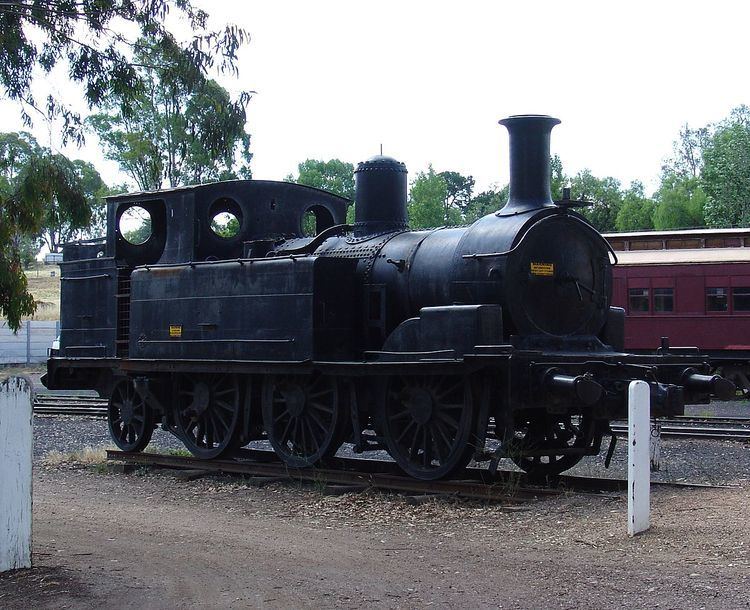Power type steam | Gauge 5 ft 3 in (1,600 mm) | |
 | ||
The pattern suburban E class tank loco was built by Kitson & Co of Leeds, England, in 1888 and was a typical British tank engine of the 2-4-2 wheel arrangement. The original loco was displayed in the Centennial International Exhibition in the Melbourne Exhibition Buildings in 1888.
There were seventy-one in the class, numbered 426 (pattern), 346 to 394 (even numbers), 12, 34, 36, 428 to 460 (even numbers) and 472 to 520 (even numbers). In the 1920s, the electrification project rendered twenty of these locos surplus and they were sold to South Australian Railways in 1920 to become their second M class. Twenty-four were converted to 0-6-2 shunters and, along with the five built, were re-classed EE.
In 1923 the EE class was renumbered 350 to 379, the E class were renumbered 236 to 245, but all were taken off register except for 506, which became unclassed shunter 236. In 1929 the EE class were renumbered 350 to 390 and re-classed E.
E359 was the first taken off register in November 1937 but the others remained on register until the 1950s, with six lasting into the early 1960s. The last two, numbers 369 and 371, finished their working lives as yard pilots at Newport Workshops until 1972, when they were retired. 371 was allocated to the Victorian Goldfields Railway and 369 was given to the ARHS in Williamstown. An original also survives: E236 became a shunter in Newport Workshops until 1953; in 1962 it was also given to the ARHS in Williamstown.
